How Programmable Construction Can Shape the Future of Sustainable Building in Italy
Abstract
1. Introduction
2. Literature Review
2.1. Advancements and Challenges in Automation and Robotics Technology in the Construction Industry
2.2. Comparative Analysis of Robotic and Traditional Construction Methods in Italy and Europe
2.3. Gap and Research Scope
3. Methodology
3.1. Research Design
3.2. Data Collection
3.2.1. Market Analysis
3.2.2. Case Study Data
- Site Selection: The project is situated in Italy under standard European conditions, characterized by a residential independent unit located in a flat area, making it representative of typical construction sites in the European Union.
- Climate and Soil: The house is located in a climate and soil context typical of many European countries, ensuring the findings are broadly applicable across the region.
- Logistics and Accessibility: The site offers easy accessibility for the logistics and storage of materials, which is critical for the smooth operation of automated machines.
- Affordability: The house was constructed with a budget appropriate for average economic conditions, using traditional techniques and an average investment of resources and manpower. This aspect is important for evaluating the cost-effectiveness of introducing automation.
- Construction Timeline: The project timeline was unaffected by delays or issues from the construction company, providing a reliable baseline for comparing traditional and automated construction methods.
- Construction Period: The construction period was typical for a residential unit of this size and complexity, allowing for meaningful comparisons between the actual time taken and the potential time savings offered by automation.
- Layout Simplicity: The villa’s straightforward internal layout allows for the potential application of automated machines without significant limitations that could affect cost and time efficiency.
- Material and Finishing: The house was built using traditional materials and standard finishing, ensuring that any automation applied would be relevant and easily integrated into similar projects.
3.3. Analytical Framework
3.3.1. Construction and Plan Phase Analysis-Cost and Time
3.3.2. Traditional Methodologies for Construction
3.3.3. Automated Machines for Construction
3.3.4. Theoretical Simulation
3.3.5. Environmental Impact Assessment
3.3.6. Safety Analysis
4. Results and Discussion
5. Conclusions
6. Limitations and Future Studies
- This study focuses on a single case study in Italy, which limits the generalizability of findings to other regions or larger, more complex construction projects.
- This research assumes optimal performance of automated systems under ideal conditions without addressing real-world challenges such as technical malfunctions, site constraints, or learning curves for operators.
- The socio-economic impacts of automation on labor markets, including job displacement and the need for reskilling, shall be one of the main topics for future studies.
- Future studies should explore global comparative case studies to understand automation’s impact in varying economic, regulatory, and cultural contexts.
- Detailed lifecycle cost and environmental assessments of automated systems would provide a more comprehensive view of their long-term economic and ecological impacts.
- Investigating automation’s scalability to large-scale infrastructure projects, such as highways or commercial complexes, could demonstrate its broader applicability.
- Studying the resilience of automated systems under challenging conditions, such as extreme weather or uneven terrain, would improve their design and deployment strategies.
Author Contributions
Funding
Institutional Review Board Statement
Informed Consent Statement
Data Availability Statement
Acknowledgments
Conflicts of Interest
References
- Paulson, B.C. Automation and Robotics for Construction. J. Constr. Eng. Manag. 1985, 111, 190–207. [Google Scholar] [CrossRef]
- Ha, Q.; Santos, M.; Nguyen, Q.; Rye, D.; Durrant-Whyte, H. Robotic excavation in construction automation. IEEE Robot. Autom. Mag. 2002, 9, 20–28. [Google Scholar] [CrossRef]
- Mahbub, R. Readiness of a developing nation in implementing automation and robotics technologies in construction: A case study of Malaysia. J. Civ. Eng. Archit. 2012, 6, 858. [Google Scholar]
- Cai, S.; Ma, Z.; Skibniewski, M.; Guo, J.; Yun, L. Application of automation and robotics technology in high-rise building construction: An overview. In Proceedings of the International Symposium on Automation and Robotics in Construction, Berlin, Germany, 20–25 July 2018; Volume 35, pp. 1–8. [Google Scholar]
- Cai, S.; Ma, Z.; Skibniewski, M.J.; Bao, S. Construction automation and robotics for high-rise buildings over the past decades: A comprehensive review. Adv. Eng. Inform. 2019, 42, 100989. [Google Scholar] [CrossRef]
- Cai, S.; Ma, Z.; Skibniewski, M.J.; Bao, S.; Wang, H. Construction Automation and Robotics for High-Rise Buildings: Development Priorities and Key Challenges. J. Constr. Eng. Manag. 2020, 146, 04020096. [Google Scholar] [CrossRef]
- Davila Delgado, J.M.; Oyedele, L.; Ajayi, A.; Akanbi, L.; Akinade, O.; Bilal, M.; Owolabi, H. Robotics and automated systems in construction: Understanding industry-specific challenges for adoption. J. Build. Eng. 2019, 26, 100868. [Google Scholar] [CrossRef]
- Aghimien, D.O.; Aigbavboa, C.O.; Oke, A.E.; Thwala, W.D. Mapping out research focus for robotics and automation research in construction-related studies: A bibliometric approach. J. Eng. Des. Technol. 2020, 18, 1063–1079. [Google Scholar] [CrossRef]
- Slaughter, E.S. Characteristics of existing construction automation and robotics technologies. Autom. Constr. 1997, 6, 109–120. [Google Scholar] [CrossRef]
- Tanijiri, H.; Ishiguro, B.; Arai, T.; Yoshitake, R.; Kato, M.; Morishima, Y.; Takasaki, N. Development of automated weather-unaffected building construction system. Autom. Constr. 1997, 6, 215–227. [Google Scholar] [CrossRef]
- Araya-Aliaga, E.; Atencio, E.; Lozano, F.; Lozano-Galant, J. Automating Dataset Generation for Object Detection in the Construction Industry with AI and Robotic Process Automation (RPA). Buildings 2025, 15, 410. [Google Scholar] [CrossRef]
- Saidi, K.S.; Bock, T.; Georgoulas, C. Robotics in Construction. In Springer Handbook of Robotics; Siciliano, B., Khatib, O., Eds.; Springer Handbooks; Springer International Publishing: Cham, Switzerland, 2016; pp. 1493–1520. ISBN 978-3-319-32550-7. [Google Scholar]
- Robotics: A robot that flies like a bat. Nature 2017, 542, 140. [CrossRef] [PubMed]
- Melenbrink, N.; Werfel, J.; Menges, A. On-site autonomous construction robots: Towards unsupervised building. Autom. Constr. 2020, 119, 103312. [Google Scholar] [CrossRef]
- You, K.; Zhou, C.; Ding, L. Deep learning technology for construction machinery and robotics. Autom. Constr. 2023, 150, 104852. [Google Scholar] [CrossRef]
- Lee, J.; Ok, C.; Choi, H.; Kim, Y. A development priority and technology roadmap for construction automation. J. Archit. Instritute Korea 2010, 26, 131–140. [Google Scholar]
- Bernold, L.E. Automation and robotics in construction: A challenge and a chance for an industry in transition. Int. J. Proj. Manag. 1987, 5, 155–160. [Google Scholar] [CrossRef]
- Kumar, V.S.S.; Prasanthi, I.; Leena, A. Robotics and Automation in Construction Industry. In Proceedings of the AEI 2008: Building Integration Solutions, Denver, CO, USA, 24–27 September 2008; pp. 1–9. [Google Scholar]
- Xiao, B.; Chen, C.; Yin, X. Recent advancements of robotics in construction. Autom. Constr. 2022, 144, 104591. [Google Scholar] [CrossRef]
- Lilis, G.; Conus, G.; Asadi, N.; Kayal, M. Towards the next generation of intelligent building: An assessment study of current automation and future IoT based systems with a proposal for transitional design. Sustain. Cities Soc. 2017, 28, 473–481. [Google Scholar] [CrossRef]
- Aparicio-Ruiz, P.; Barbadilla-Martín, E.; Salmerón-Lissén, J.M.; Guadix-Martín, J. Building automation system with adaptive comfort in mixed mode buildings. Sustain. Cities Soc. 2018, 43, 77–85. [Google Scholar] [CrossRef]
- Al-Atroush, M.; Aboelela, A.; Hemdan, E.E.-D. Beyond py method: A review of artificial intelligence approaches for predicting lateral capacity of drilled shafts in clayey soils. J. Rock Mech. Geotech. Eng. 2024, 16, 3812–3840. [Google Scholar] [CrossRef]
- Bock, T. Construction robotics enabling innovative disruption and social supportability. In Proceedings of the International Symposium on Automation and Robotics in Construction, Oulu, Finland, 15–18 June 2015; Volume 32, p. 1. [Google Scholar]
- Balaguer, C. Nowadays trends in robotics and automation in construction industry: Transition from hard to soft robotics. In Proceedings of the International Symposium on Automation and Robotics in Construction, New Orleans, LA, USA, 26 April–1 May 2004. [Google Scholar]
- Goetjen, H.K.; Dann, C.; Berg, J. Engineering and Construction Industry Trends: E&C Companies Need to Break Out of the Commoditization Trap. PwC Strategy 2016, 1, 1–12. [Google Scholar]
- Mazzetto, S. A practical, multidisciplinary approach for assessing leadership in project management education. J. Appl. Res. High. Educ. 2019, 11, 50–65. [Google Scholar] [CrossRef]
- Mazzetto, S. Multidisciplinary collaboration: An integrated and practical approach to the teaching of project management. Int. J. Contin. Eng. Educ. Life Long Learn. 2020, 30, 52–67. [Google Scholar] [CrossRef]
- Yamazaki, Y. Future innovative construction technologies: Directions and strategies to innovate construction industry. In Proceedings of the 21st International Symposium on Automation and Robotics in Construction, Jeju, Republic of Korea, 21–25 September 2004. [Google Scholar]
- Pan, M.; Linner, T.; Pan, W.; Cheng, H.; Bock, T. A framework of indicators for assessing construction automation and robotics in the sustainability context. J. Clean. Prod. 2018, 182, 82–95. [Google Scholar] [CrossRef]
- Mazzetto, S. Interdisciplinary Perspectives on Agent-Based Modeling in the Architecture, Engineering, and Construction Industry: A Comprehensive Review. Buildings 2024, 14, 3480. [Google Scholar] [CrossRef]
- Kangari, R.; Halpin, D.W. Potential Robotics Utilization in Construction. J. Constr. Eng. Manag. 1989, 115, 126–143. [Google Scholar] [CrossRef]
- Kangari, R.; Halpin, D.W. Identification of factors influencing implementation of construction robotics. Constr. Manag. Econ. 1990, 8, 89–104. [Google Scholar] [CrossRef]
- Everett, J.G. Ergonomics, health, and safety in construction: Opportunities for automation and robotics. In Automation and Robotics in Construction Xi; Elsevier: Amsterdam, The Netherlands, 1994; pp. 19–26. [Google Scholar] [CrossRef]
- Everett, J.G.; Slocum, A.H. Automation and Robotics Opportunities: Construction versus Manufacturing. J. Constr. Eng. Manag. 1994, 120, 443–452. [Google Scholar] [CrossRef]
- Ueno, T. Automation and Robotics in Construction in Japan: State of the Art. In Proceedings of the International Symposium on Automation and Robotics in Construction (ISARC), International Association for Automation and Robotics in Construction (IAARC), Munchen, Germany, 1998; pp. 33–36. Available online: https://www.iaarc.org/publications/fulltext/Automation_And_Robotics_In_Japan.pdf (accessed on 2 February 2025).
- Elattar, S.M.S. Automation and robotics in construction: Opportunities and challenges. Emir. J. Eng. Res. 2008, 13, 21–26. [Google Scholar]
- Mahbub, R. An investigation into the Barriers to the Implementation of Automation and Robotics Technologies in the Construction Industry. Ph.D. Thesis, Queensland University of Technology, Brisbane, Australia, 2008. [Google Scholar]
- Chu, B.; Jung, K.; Lim, M.-T.; Hong, D. Robot-based construction automation: An application to steel beam assembly (Part I). Autom. Constr. 2013, 32, 46–61. [Google Scholar] [CrossRef]
- Mistri, P.S.; Rathod, H.A. Remedies over barriers of automation and robotics for construction industry. Int. J. Adv. Res. Eng. Sci. Manag. 2015, 1, 1–4. [Google Scholar]
- García De Soto, B.; Agustí-Juan, I.; Hunhevicz, J.; Joss, S.; Graser, K.; Habert, G.; Adey, B.T. Productivity of digital fabrication in construction: Cost and time analysis of a robotically built wall. Autom. Constr. 2018, 92, 297–311. [Google Scholar] [CrossRef]
- IIhan, B.; Hu, R.; Iturralde, K.; Pan, W.; Taghavi, M.; Bock, T. Achieving Sustainability in Construction Through Automation and Robotics. In Grand Renewable Energy Proceedings Japan Council for Renewable Energy (2018); Japan Council for Renewable Energy: Tokyo, Japan, 2018; p. 93. [Google Scholar]
- Abd Rashid, M.N.; Abdullah, M.R.; Ismail, D.; Saberi, M.H. Automation and robotics in industrialized building system (IBS): The potential criteria for measurement. Int. J. Acad. Res. Bus. Soc. Sci. 2019, 9, 1020–1034. [Google Scholar] [CrossRef] [PubMed]
- Oke, A.; Aigbavboa, C.; Omole, O. Drivers to the Adoption of Automation and Robotics in the Construction Industry. In Proceedings of the International Conference on Industrial Engineering and Operations Management, Toronto, ON, Canada, 23–25 October 2019; pp. 23–25. [Google Scholar]
- Chea, C.P.; Bai, Y.; Pan, X.; Arashpour, M.; Xie, Y. An integrated review of automation and robotic technologies for structural prefabrication and construction. Transp. Saf. Environ. 2020, 2, 81–96. [Google Scholar] [CrossRef]
- Gharbia, M.; Chang-Richards, A.; Lu, Y.; Zhong, R.Y.; Li, H. Robotic technologies for on-site building construction: A systematic review. J. Build. Eng. 2020, 32, 101584. [Google Scholar] [CrossRef]
- Bademosi, F.M.; Issa, R.R.A. Automation and Robotics Technologies Deployment Trends in Construction. In Automation and Robotics in the Architecture, Engineering, and Construction Industry; Jebelli, H., Habibnezhad, M., Shayesteh, S., Asadi, S., Lee, S., Eds.; Springer International Publishing: Cham, Switzerland, 2022; pp. 1–30. ISBN 978-3-030-77162-1. [Google Scholar]
- Balzan, A.; Aparicio, C.C.; Trabucco, D. Robotics in Construction: State-of-Art of On-site Advanced Devices. Int. J. High-Rise Build. 2020, 9, 95–104. [Google Scholar] [CrossRef]
- Hatoum, M.B.; Nassereddine, H. Developing a Framework for the Implementation of Robotics in Construction Enterprises. In Proceedings of the EG-ICE 2020 Workshop on Intelligent Computing in Engineering, Proceedings, Online, 1–4 July 2020; pp. 453–462. [Google Scholar]
- Rahim, A.; Zhong, Y.; Ahmad, T.; Ahmad, S.; Pławiak, P.; Hammad, M. Enhancing smart home security: Anomaly detection and face recognition in smart home IoT devices using logit-boosted CNN models. Sensors 2023, 23, 6979. [Google Scholar] [CrossRef]
- Alnmr, A.; Hosamo, H.H.; Lyu, C.; Ray, R.P.; Alzawi, M.O. Novel Insights in Soil Mechanics: Integrating Experimental Investigation with Machine Learning for Unconfined Compression Parameter Prediction of Expansive Soil. Appl. Sci. 2024, 14, 4819. [Google Scholar] [CrossRef]
- Zhao, J.; Long, P.; Wang, L.; Qian, L.; Lu, F.; Song, X.; Manocha, D.; Zhang, L. AES: Autonomous Excavator System for Real-World and Hazardous Environments. arXiv 2020, arXiv:2011.04848. [Google Scholar]
- Bock, T. Construction robotics. Auton. Robots 2007, 22, 201–209. [Google Scholar] [CrossRef]
- Bock, T. Construction automation and robotics. Robot. Autom. Constr. 2008, 1, 21–42. [Google Scholar]
- Kim, T.; Lee, D.; Lim, H.; Lee, U.-K.; Cho, H.; Cho, K. Exploring research trends and network characteristics in construction automation and robotics based on keyword network analysis. J. Asian Archit. Build. Eng. 2021, 20, 442–457. [Google Scholar] [CrossRef]
- Sirror, H.; Labib, W.; Abowardah, E.; Metwally, W.; Mitchell, C. Sustainability in the Workplace: Evaluating Indoor Environmental Quality of a Higher Education Building in Riyadh. Buildings 2024, 14, 2115. [Google Scholar] [CrossRef]
- Parascho, S. Construction robotics: From automation to collaboration. Annu. Rev. Control Robot. Auton. Syst. 2023, 6, 183–204. [Google Scholar] [CrossRef]
- Codarin, S. Enhancing the workforce in construction: Robotic concrete printing in Detroit. TECHNE-J. Technol. Archit. Environ. 2023, 1, 233–242. [Google Scholar] [CrossRef]
- Nath, A.S. A review of advancements in robotic and sensor-based technologies in construction sector. Eur. J. Eng. Technol. Res. 2022, 7, 85–89. [Google Scholar] [CrossRef]
- Younis, M.S. Assessing Construction Automation and Robotics in the Sustainability Sense. J. Sci. Technol. 2022, 27, 45–60. [Google Scholar] [CrossRef]
- Wang, L.; Naito, T.; Leng, Y.; Fukuda, H.; Zhang, T. Research on Construction Performance Evaluation of Robot in Wooden Structure Building Method. Buildings 2022, 12, 1437. [Google Scholar] [CrossRef]
- Klarin, A.; Xiao, Q. Automation in architecture, engineering and construction: A scientometric analysis and implications for management. Eng. Constr. Archit. Manag. 2024, 31, 3308–3334. [Google Scholar] [CrossRef]
- Volvo Reveal Results of Electric Site Research Project|Agg-Net. Available online: https://www.agg-net.com/resources/articles/loading-hauling/volvo-reveal-results-of-electric-site-research-project (accessed on 2 February 2025).
- Robo Industries Inc. Available online: https://www.robo-us.com/ (accessed on 2 February 2025).
- Future Study—Fully Autonomous Tandem Roller. Available online: https://www.bomag.com/ww-en/press/news-videos/future-study-fully-autonomous-tandem-roller/ (accessed on 2 February 2025).
- Garfield, L. A Robot Can Print this $64,000 House in as Few as 8 Hours—Take a Look Inside. Available online: https://www.businessinsider.com/3d-printed-house-robot-passivdom-2017-4 (accessed on 2 February 2025).
- Rebar Equipment|Construction Robots|Home of TyBot and IronBot. Available online: https://www.constructionrobots.com (accessed on 2 February 2025).
- IronBOT|Rebar Lifting, Carrying, and Self-Placing Robot. Available online: https://www.constructionrobots.com/ironbot (accessed on 2 February 2025).
- Fastbrick to Build Its Second Bricklaying Robot. Available online: https://masonrydesignmagazine.com/Default?pageID=974 (accessed on 2 February 2025).
- USA, H. Jaibot Drilling Robot. Available online: https://www.hilti.com/content/hilti/W1/US/en/business/business/trends/jaibot.html (accessed on 2 February 2025).
- Timber Construction. Available online: https://rob-technologies.com/timber-construction (accessed on 2 February 2025).
- Plastering Pump. Available online: https://acme.com.sg/product/plastering-pump/ (accessed on 2 February 2025).
- OKIBO-Our Robot. OKIBO. Available online: https://okibo.com/our-robot/ (accessed on 2 February 2025).
- BIM-Driven Layout for Construction|Dusty Robotics. Available online: https://www.dustyrobotics.com/ (accessed on 2 February 2025).
- This Robot Sets Tile Twice as Fast as a Human|ProTradeCraft. Available online: https://www.protradecraft.com/home/video/55181506/this-robot-sets-tile-twice-as-fast-as-a-human (accessed on 2 February 2025).
- Construction Automation and Robotics. Available online: https://www.baubot.com (accessed on 2 February 2025).
- Support for Phantom 4 Rtk. Available online: https://www.dji.com/global/support/product/photo (accessed on 2 February 2025).
- Khan, B.M.; Kadri, M.B. Seamless Connections: Harnessing Machine Learning for MAC Optimization in Home Area Networks. Electronics 2023, 12, 4082. [Google Scholar] [CrossRef]
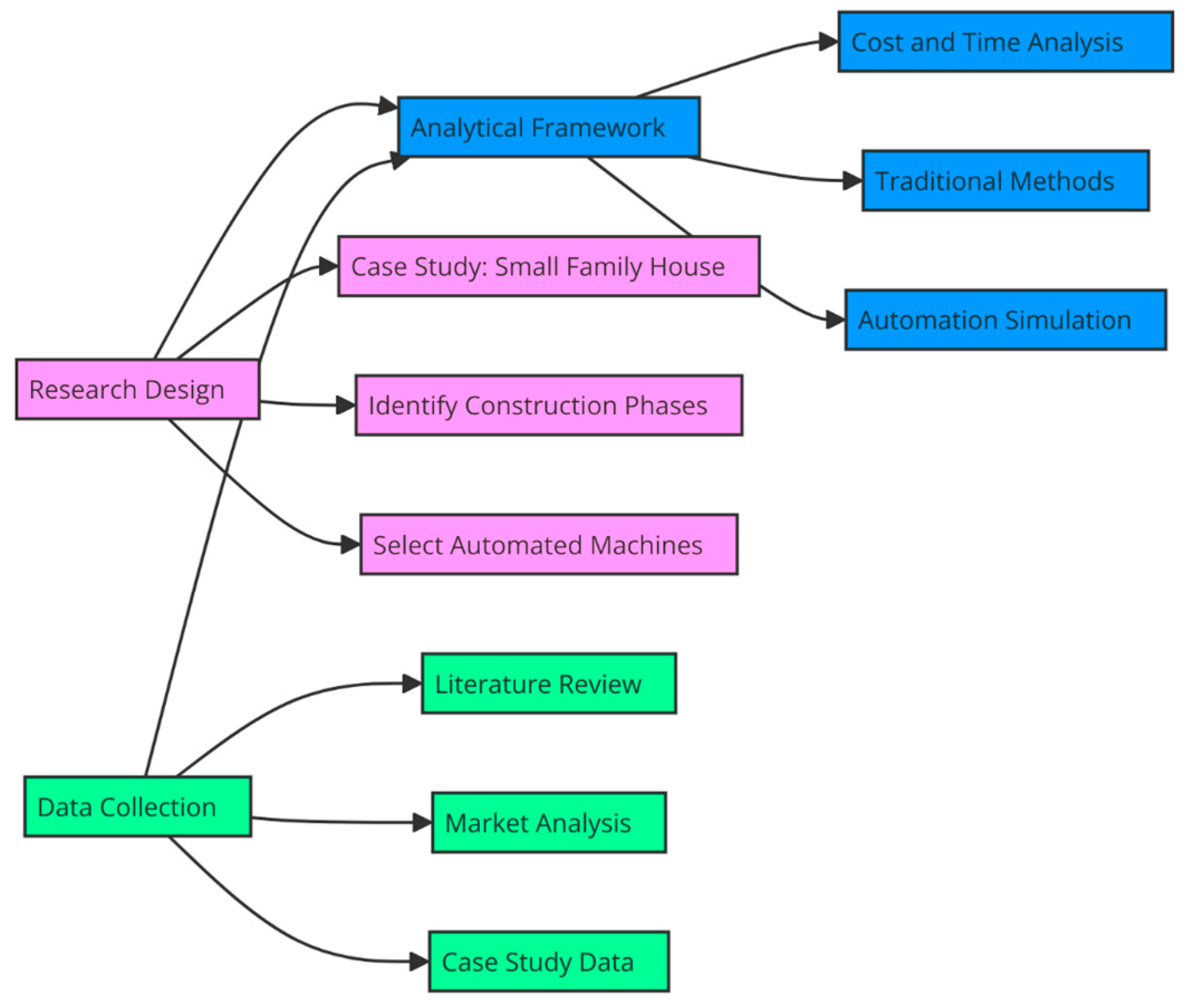
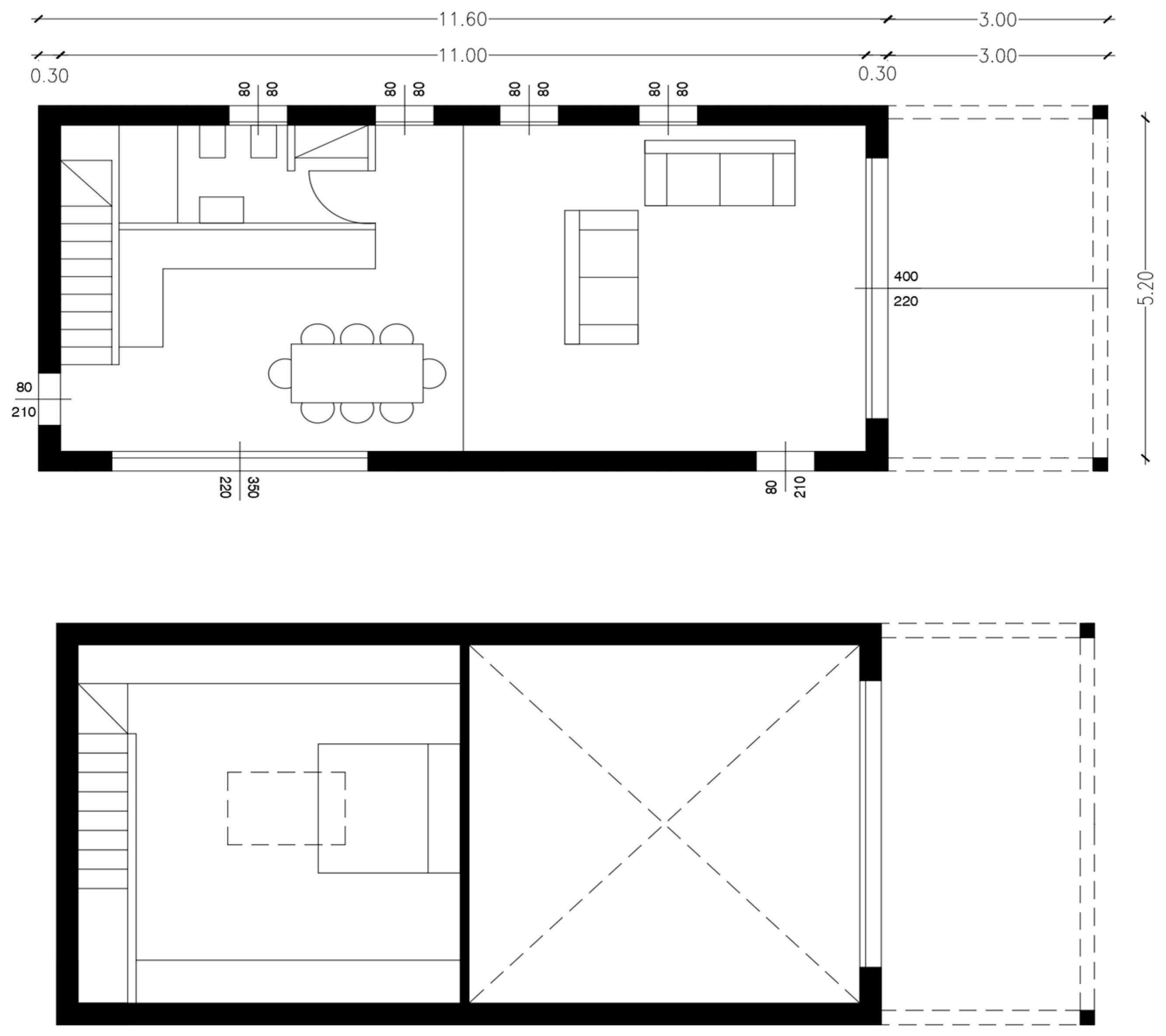


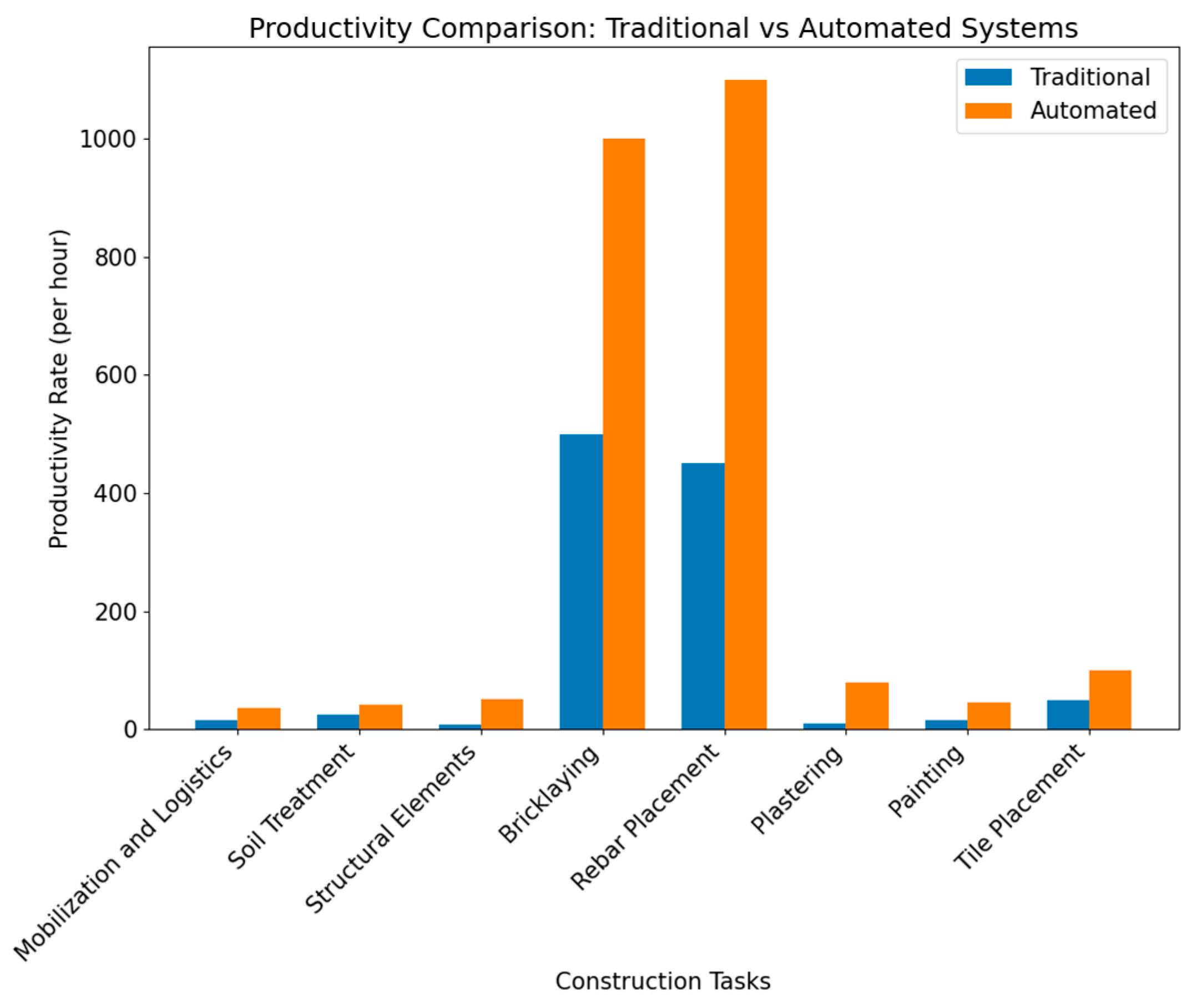
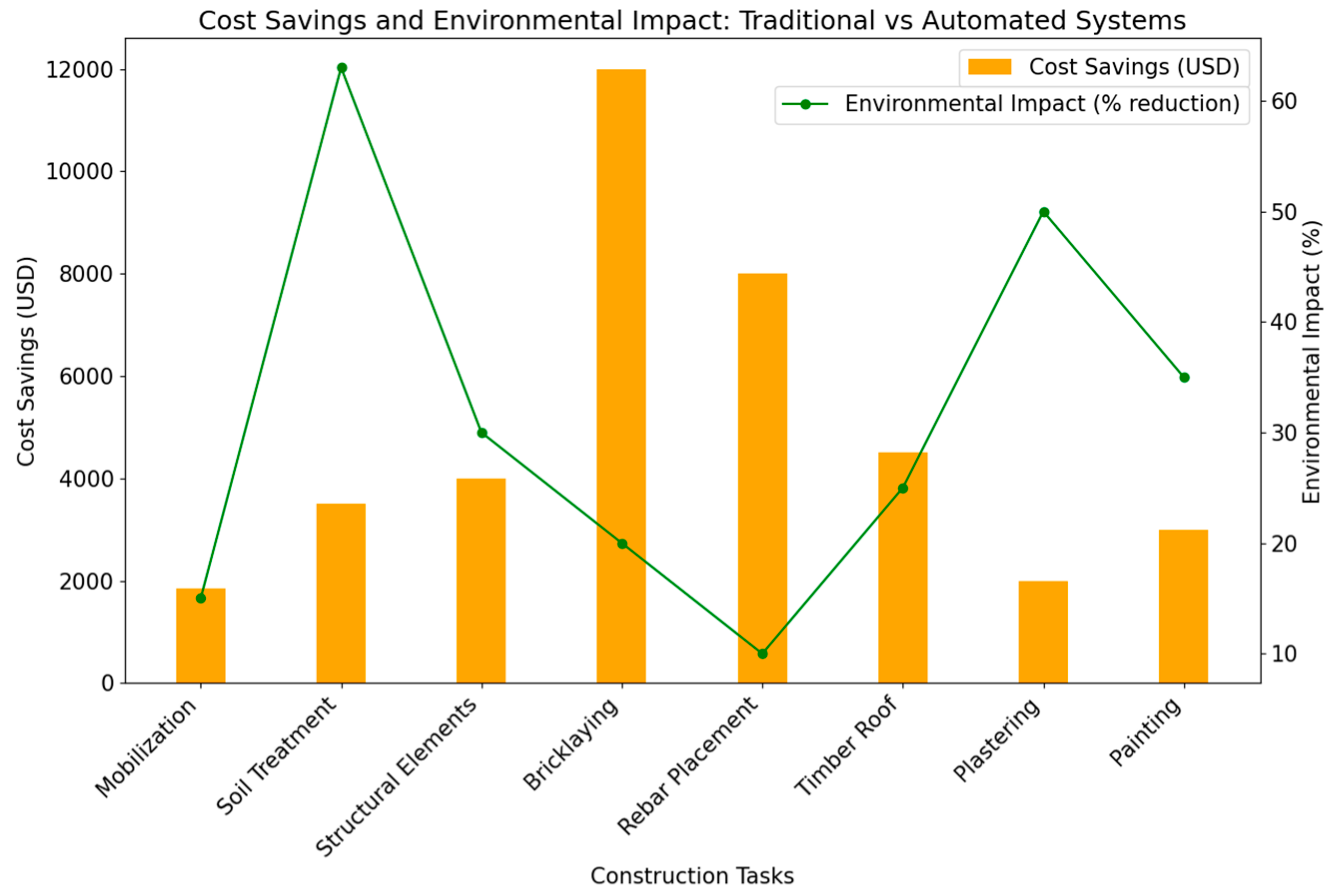
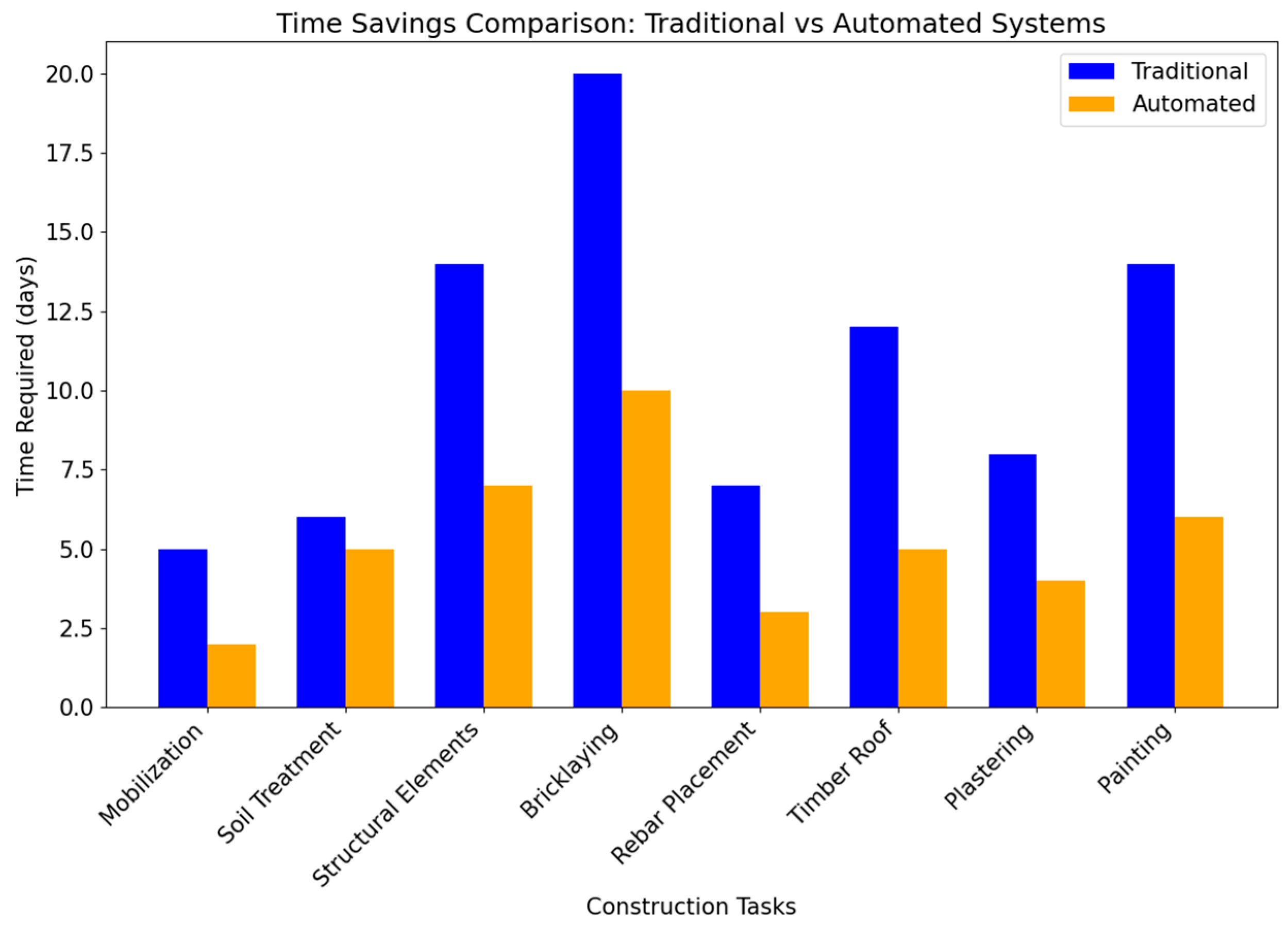

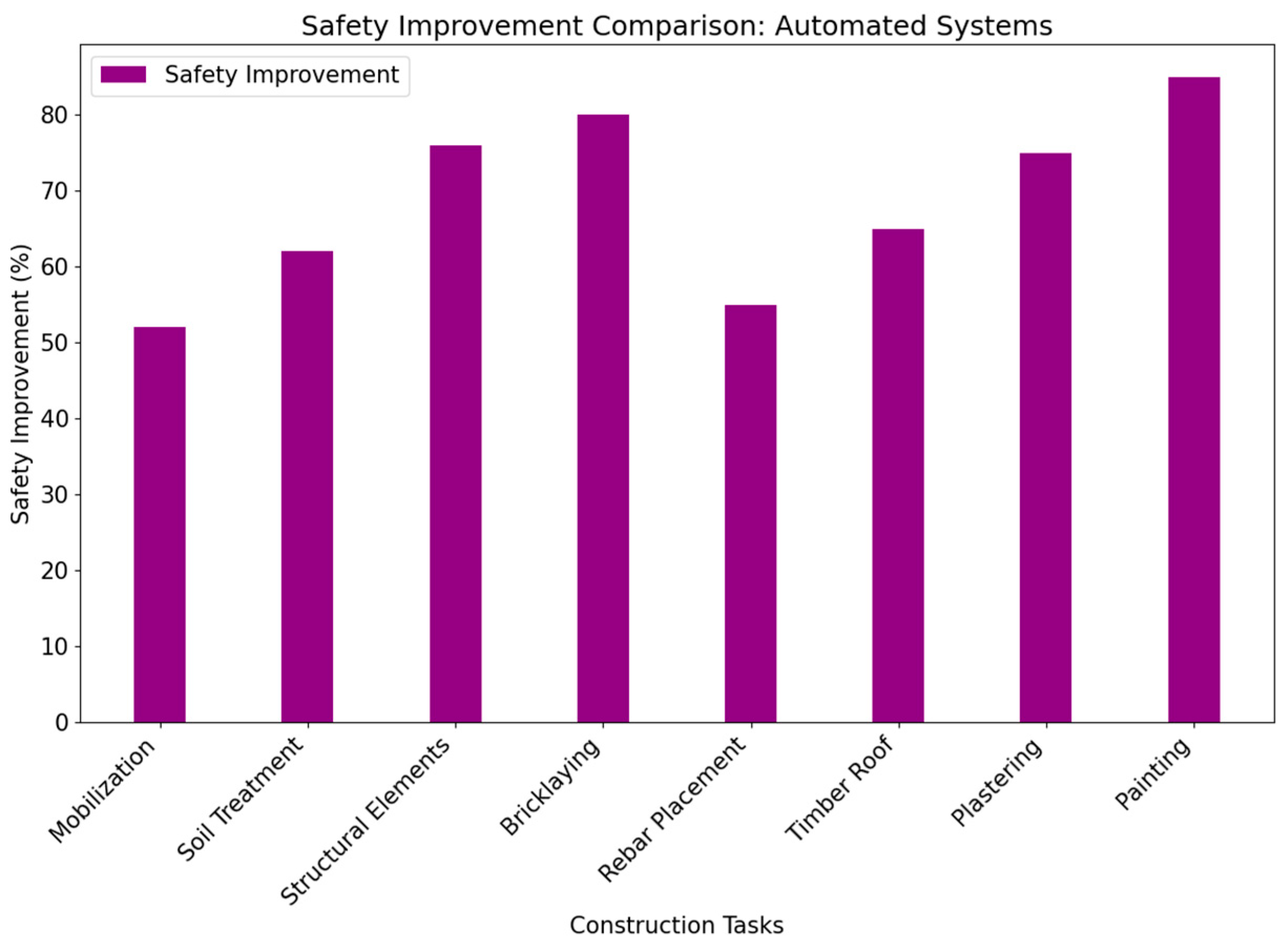
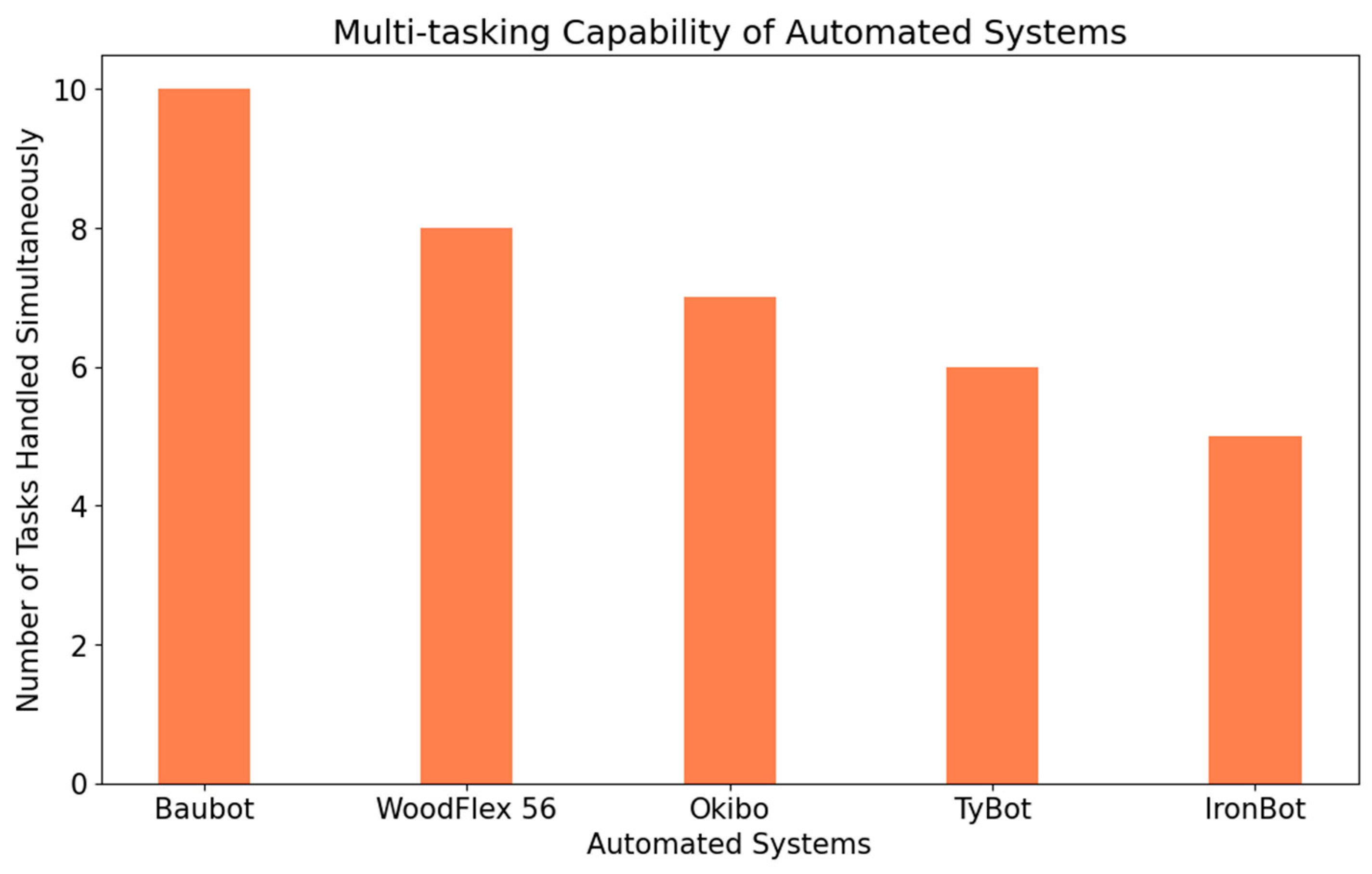
| Construction Task | Robot Type | Comparison Focus | Key Findings | Source | Reference |
|---|---|---|---|---|---|
| Concrete pouring | Robotic Concrete Pump | Precision, Safety | Enhanced precision, 30% reduction in accidents on-site | (Rashid, Abdullah, Ismail, & Saberi, 2019) | [43] |
| Structural assembly | Robotic Arm | Time, Cost | 25% faster assembly, 10% cost savings | (Melenbrink, Werfel, & Menges, 2020) | [14] |
| Prefabricated wall installation | Mobile Robotic Crane | Efficiency, Integration | Increased efficiency, challenges in system integration | (Gharbia, Chang-Richards, Lu, Zhong, & Li, 2020) | [46] |
| Road construction | Autonomous Paver | Time, Labor | Reduced labor needs, 40% faster completion | (Delgado, et al., 2019) | [7] |
| Tunnel boring | Robotic TBM | Safety, Time | Significant safety improvements, 35% faster boring process | (Xiao, Chen, & Yin, 2022) | [19] |
| Facade construction | Robotic Scaffold | Safety, Precision | Improved precision, 25% reduction in on-site injuries | (Gharbia, Chang-Richards, Lu, Zhong, & Li, 2020) | [46] |
| Concrete wall fabrication | Robotic Wall Builder | Cost, Productivity | 18% reduction in costs, 22% increase in productivity | (Pan, Linner, Pan, Cheng, & Bock, 2018) | [30] |
| Various (Collaborative Robotics) | Collaborative Robots | Safety, Robustness, Interactivity | Evolution from pure automation to collaborative and adaptive robotics in construction | (Parascho, 2023) | [57] |
| Concrete Printing | Robotic Concrete Printer | Feasibility, Design Innovation | Discusses the potential of robotic concrete printing in large-scale construction | (Codarin, 2023) | [58] |
| Various (Robotic and Sensor-Based Technologies) | Robotic Systems | Quality, Efficiency, Safety | Reviews advancements in robotics and sensor technologies in construction | (Nath, 2022) | [59] |
| Sustainability in Construction | Construction Robotics | Sustainability, Efficiency | Proposes a system for measuring sustainability efficiency of construction robotics | (Younis, 2022) | [60] |
| Timber Construction | Robotic Construction Systems | Efficiency, Accuracy | Evaluates robotic construction of timber buildings, highlighting improvements in efficiency | (Wang, Naito, Leng, Fukuda, & Zhang, 2022) | [61] |
| AEC Industry | Automation in AEC | Productivity, Management | Maps the state of automation in AEC, identifying key technological frontiers | (Klarin & Xiao, 2023) | [62] |
| Item | Unit | Planned Cost (€) | Planned Days | Cost/Day (€) | Planned Production Rate | Executed Cost (€) | Executed Days | Production Rate | Executed Production Rate |
|---|---|---|---|---|---|---|---|---|---|
| Storage and logistics of materials | sqm | 4411.76 | 12 | 367.65 | 2.083 | 6250 | 17 | mq/day | 1.47 |
| Excavation | sqm | 3579.23 | 9 | 397.69 | 12.22 | 5170 | 13 | mq/day | 8.46 |
| Scaffolding installation | sqm | 5280 | 7 | 754.29 | 34.28 | 5280 | 7 | mq/day | 34.28 |
| Rck 250 Concrete Installation | mc | 9750 | 13 | 750 | 3.84 | 13,500 | 18 | mc/day | 2.77 |
| Elevated external masonry | sqm | 6540.8 | 12 | 545.07 | 6.08 | 8176 | 15 | mq/day | 4.86 |
| Inclined timber roof | sqm | 14021.05 | 16 | 876.32 | 5.62 | 16,650 | 19 | mq/day | 4.73 |
| Internal gypsum wall partition | sqm | 3220 | 14 | 230 | 1.64 | 3220 | 14 | mq/day | 1.64 |
| Roof tiles installation | sqm | 8224.62 | 11 | 747.69 | 8.18 | 9720 | 13 | mq/day | 6.92 |
| External civil plaster | sqm | 2463.16 | 13 | 189.47 | 6.15 | 3600 | 19 | mq/day | 4.21 |
| Internal civil plaster | sqm | 3000 | 8 | 375 | 12.5 | 3000 | 8 | mq/day | 12.5 |
| Floor ceramic tiles | sqm | 5246 | 5 | 1049.2 | 17.2 | 5246 | 5 | mq/day | 17.2 |
| White laminated PVC doors and windows | sqm | 9720 | 7 | 1388.57 | 3.24 | 9720 | 10 | mq/day | 2.27 |
| High-quality interior painting | sqm | 1800 | 5 | 360 | 20 | 3600 | 10 | mq/day | 10 |
| High-quality exterior painting | sqm | 3584 | 8 | 448 | 10 | 4480 | 10 | mq/day | 8 |
| Site cleaning and closure | sqm | 2249.78 | 5 | 449.96 | 20.2 | 4499.55 | 10 | mq/day | 10.1 |
| Scaffolding dismantling | sqm | 1499.85 | 5 | 299.97 | 20.2 | 2999.7 | 10 | mq/day | 10.1 |
| Total | 84,590.25 | 105,111.3 |
| SCOPE | Type | Product Name | Job | Productivity Rate | Source | Reference |
|---|---|---|---|---|---|---|
| Mobilization and Logistics | Autonomous Excavator | Autonomous Excavator System | Material loading and soil excavation | The system can continuously operate for 24 h without any human assistance. The amount of material handled per hour is closely equivalent to that of an experienced human operator. | (Zhao, et al., 2020) | [52] |
| Loading and Hauling | Autonomous Load Carrier | Volvo HX2 | Loading and hauling materials | The Volvo HX2 has a 15-tonne hauling capacity, with a load capacity to machine weight ratio twice as high as a standard load carrier. It achieved a 40% reduction in operator costs and a 70% cut in energy costs. | (Ltd., QMJ Group., 2019) | [63] |
| Soil Treatment | Autonomous Bulldozers, Excavators, and Wheel Loaders | ROBO Heavy Equipment | Soil treatment, grading, and material handling | ROBO’s autonomous heavy equipment increases productivity by 63% compared to standard equipment. The system also allows for 24 h continuous operation, resulting in $65,450 in annual savings per machine. | (Inc., Robo Industries., 2024) | [64] |
| Soil Compacting | Autonomous Compacting Roller | ROBOMAG | Soil compacting | The ROBOMAG system is equipped with GPS, Lidar, and advanced position sensors to perform fully autonomous soil compaction, offering increased safety and comprehensive compaction documentation via ASPHALT MANAGER 2. | (BOMAG GmbH., n.d.) | [65] |
| Structure Reinforcement | 3D Printer | PassivDom 3D Printing Robot | Building the structural elements of the superstructure | The PassivDom 3D Printing Robot can construct a one-story building of 410 square feet in about 8 h, using materials like carbon fibers, polyurethane, and fiberglass. | (Garfield, A robot can print this $64,000 house in as few as 8 h—, 2017) | [66] |
| Structure Reinforcement | 3D Printer | ICON 3D Printing Robot | Building the structural elements of the superstructure | The ICON 3D Printing Robot can construct a one-story building of 650 square feet in approximately 12 h, using concrete for the walls, roof, and floor. | (Garfield, A Robot Can Build This $10,000 House Within 12 h—, 2018) | [66] |
| Structure Reinforcement | Rebar Tying Robot | TyBOT | Tying rebar intersections | The TyBOT rebar tying robot ties up to 1100 intersections per hour, significantly speeding up the rebar installation process and reducing labor costs. | (Advanced Construction Robotics, Innovating Infrastructure: Modern Equipment for Modern Crews, 2023) | [67] |
| Structure Reinforcement | Rebar Placing Robot | IronBot | Carrying and placing rebar | The IronBot can carry up to 5000-pound bundles of rebar, increasing productivity by 250% compared to traditional methods. | (Advanced Construction Robotics, Key Features of IronBOT, 2023) | [68] |
| Walls (External and Partitions) | Bricklaying Robot | Hadrian X | Bricklaying | The Hadrian X bricklaying robot lays up to 1000 bricks per hour, equivalent to the daily output of two human bricklayers. | (Fastbrick to Build Its Second Bricklaying Robot, 2017) | [69] |
| Ceiling Installation | Drilling Robot | Hilti Jaibot | Ceiling drilling for installations | The Hilti Jaibot works for 8 h per charge, improving efficiency, reducing on-site issues, and optimizing system design with increased accuracy. | (Hilti, 2023) | [70] |
| Timber Roof Construction | Gantry Robot | WoodFlex 56 | Timber handling and assembly | The WoodFlex 56 robot, equipped with a tool-changing system, performs various tasks such as handling large timber boards, shooting nails, and cutting, leading to efficient and precise timber roof construction. | (AG, 2023) | [71] |
| Plastering | Plastering Robot | Acme Plastering Robot | Plastering | The Acme Plastering Robot can take on the job of up to eight workers, ensuring efficient and consistent application of plaster with reduced manual labor. | (Ltd, ACME Equipment Pte, 2023) | [72] |
| Painting (Outdoor and Indoor) | Painting and Plastering Robot | Okibo | Painting and plastering | The Okibo robot is 3 times faster than traditional methods, capable of performing both painting and plastering tasks efficiently. | (Smart Robotics for Construction Sites, 2021) | [73] |
| Field Layout | Field Printer | Dusty Robotics Field Printer | Layout of engineering drawings | The Dusty Robotics Field Printer can lay out engineering drawings and models on-site up to 10 times faster than traditional methods, turning digital designs into full-scale layouts. | (BIM-Driven Layout: Only From Dusty Robotics, 2024) | [74] |
| Tile Placement | Tile Placement Robot | Future Cities Laboratory/ROB Technologies AG Robot | Tile placement | The tile placement robot can set field tiles twice as fast as a human, though it requires a human tender to mix mortar, grout, and cut and install anything that is not a full tile. | (Frane, 2017) | [75] |
| Multi-Tasking | Multi-Task Construction Robot | Baubot | Supports several construction applications including concrete 3D printing, reinforced concrete drilling, formwork milling, micro-trenching, plasma cutting, sanding, and painting | Boosts the efficiency and productivity in several construction tasks by automating a wide range of operations. | (Zhao, et al., 2020) | [76] |
| Surveying | Drone | Phantom 4 RTK | 3D mapping | The Phantom 4 RTK drone is equipped with a centimeter-level accurate RTK module and TimeSync system, capturing precise 3D mapping data with an accuracy of up to 1 cm horizontally and 1.5 cm vertically. | (Ltd., QMJ Group, 2019) | [77] |
Disclaimer/Publisher’s Note: The statements, opinions and data contained in all publications are solely those of the individual author(s) and contributor(s) and not of MDPI and/or the editor(s). MDPI and/or the editor(s) disclaim responsibility for any injury to people or property resulting from any ideas, methods, instructions or products referred to in the content. |
© 2025 by the authors. Licensee MDPI, Basel, Switzerland. This article is an open access article distributed under the terms and conditions of the Creative Commons Attribution (CC BY) license (https://creativecommons.org/licenses/by/4.0/).
Share and Cite
Mazzetto, S.; Hosamo, H.H.; Al-Atroush, M.E. How Programmable Construction Can Shape the Future of Sustainable Building in Italy. Sustainability 2025, 17, 1839. https://doi.org/10.3390/su17051839
Mazzetto S, Hosamo HH, Al-Atroush ME. How Programmable Construction Can Shape the Future of Sustainable Building in Italy. Sustainability. 2025; 17(5):1839. https://doi.org/10.3390/su17051839
Chicago/Turabian StyleMazzetto, Silvia, Haidar H. Hosamo, and Mohamed Ezzat Al-Atroush. 2025. "How Programmable Construction Can Shape the Future of Sustainable Building in Italy" Sustainability 17, no. 5: 1839. https://doi.org/10.3390/su17051839
APA StyleMazzetto, S., Hosamo, H. H., & Al-Atroush, M. E. (2025). How Programmable Construction Can Shape the Future of Sustainable Building in Italy. Sustainability, 17(5), 1839. https://doi.org/10.3390/su17051839








